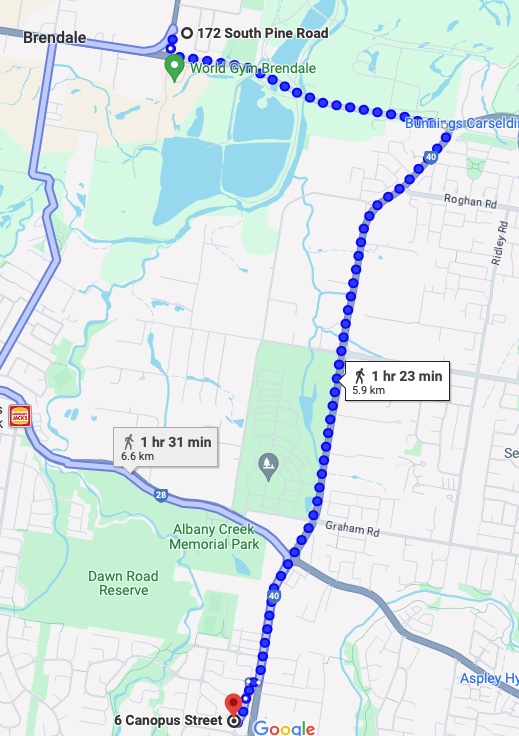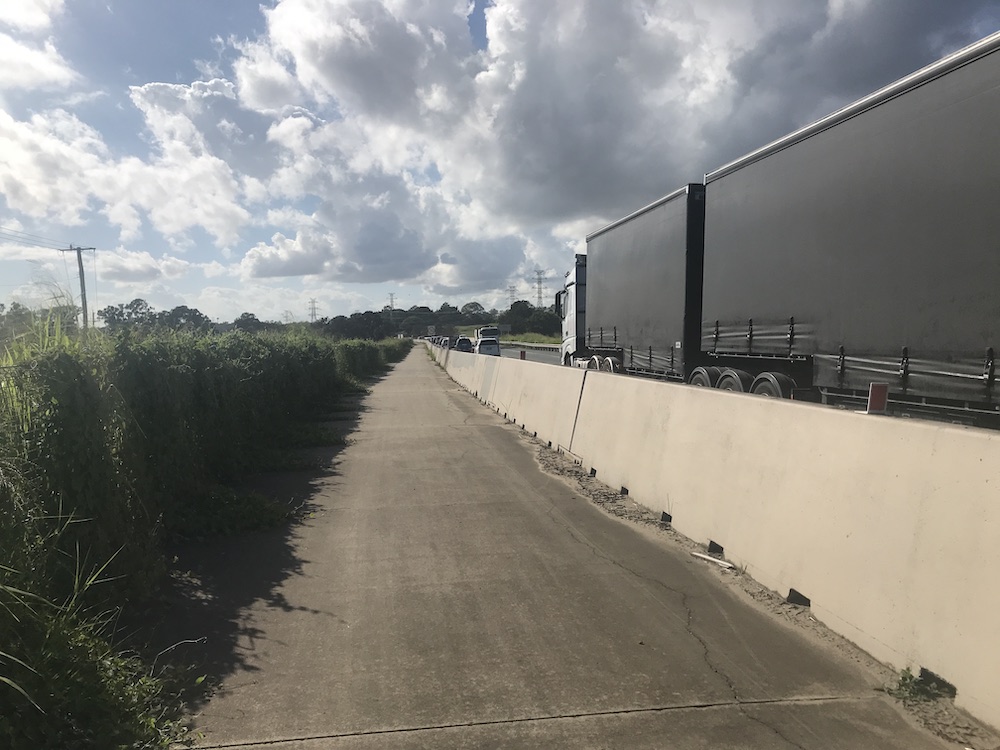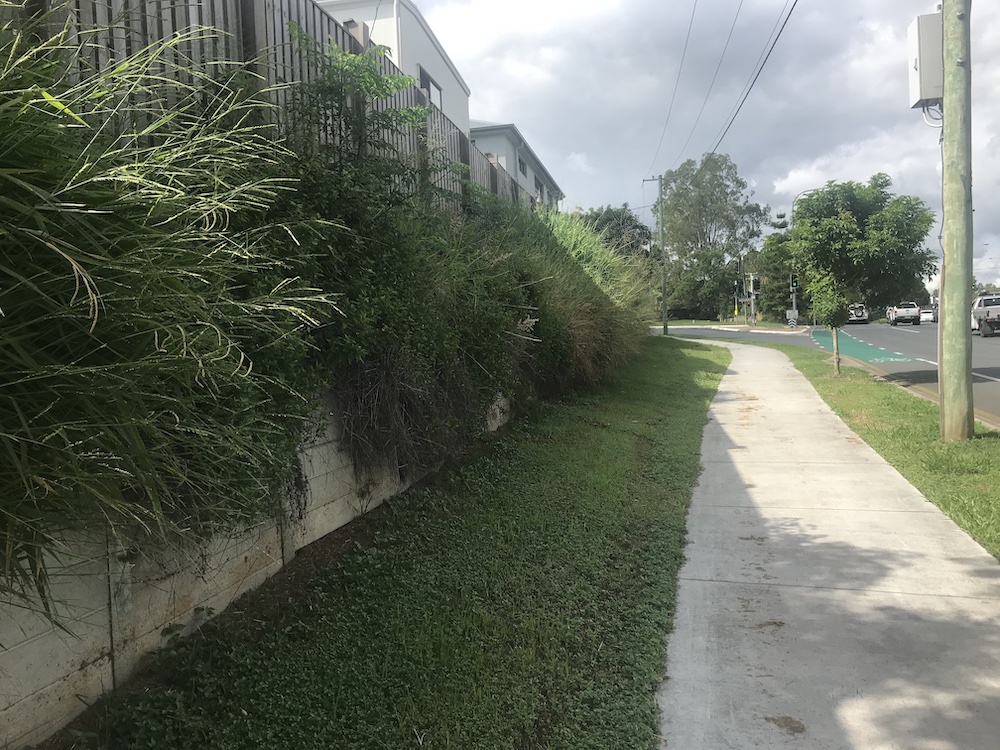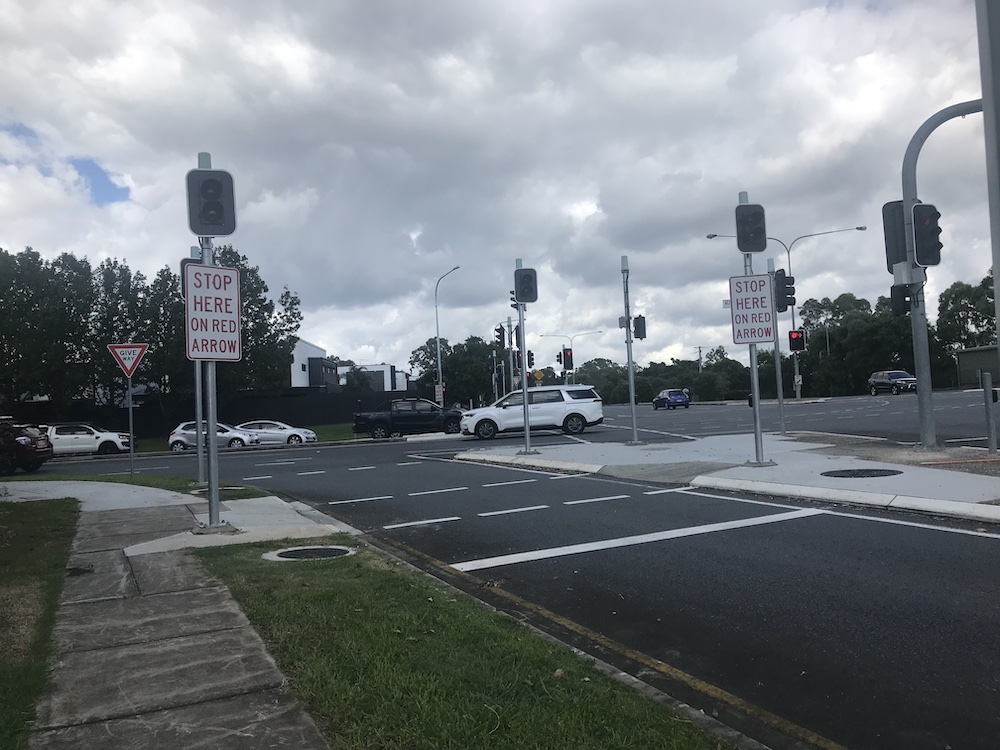There’s a lot of talk about active transport these days. That often translates into a shared path on a massive intersection that nobody would use unless desperate. But it’s there, and it ticks the box.
On Tuesday, I took my car in for a service at Brendale. It’s only a suburb away from where I live, albeit across a council boundary. It’s about 6km and takes less than 10 minutes to drive. But of course, you have to get home afterwards, and return to pick it up. There is a bus but it is infrequent and goes such a circuitous route via the back streets of Eatons Hill that it’s quicker to walk – and there is a paved path the entire journey.

But does that qualify as active transport infrastructure that makes walkable suburbs? I suspect on paper to people who never walk, ride, or catch public transport, it does.
These are major roads with constant traffic. Most of it has a 70km speed limit.

This is the first part along Linkfield Road. There is a wide path at the side and a concrete barrier separating you from the vehicles. From a previous walk, I know that the concrete barrier also blocks the light from headlamps so with no lighting you need a torch to see where you are walking at night.
Even at 8am it was hot. Traffic was constant but moving – and noisy. People inside vehicles don’t realise how much noise their vehicles make. You can listen to the video for the constant noise but you’ll miss the smell. This is a hostile environment for pedestrians.
Along Bridgeman Road, there are housing estates and some remaining acreages that will soon be redeveloped. Despite the need for more diversity in housing, they are building big detached houses on smaller blocks. The standard treatment is to create housing estates that back onto the road with a high fence. When traffic noise gets too much, they might start asking for a noise barrier.

These are good paths, paid for by the developers. They’ve even created a raised garden at the side of this one. Who is responsible for maintenance is anyone’s guess. These are freehold so there’s no body corporates. Council maybe? TMR?
People driving by in their insulated bubbles probably think that it’s nice and green – while they are also oblivious to the constant road noise.
Walking, you see that it is almost solid weed. This isn’t turf, it’s mainly weeds mown to look neat from a distance. The garden beds at the side have some native shrubs struggling to compete with weeds.
Looking at the expanse of this road – the verges, the two tarmac sections and the median strip – you realise how much more destructive of natural biodiversity and community these major roads are compared to regular suburban streets.
And then you get to the intersection…

This intersection was recently upgraded to add the fourth crossing and signalised slip lanes. Presumably the money spent on this counts as adding pedestrian infrastructure.
The obvious question is why those large signs shouting at people to stop on a red arrow are necessary? I have watched the behaviour of many drivers at signalised slip lanes, and nothing will convince me that they are safe for pedestrians. (So what’s wrong with signalised slip lanes, anyway?)
By now it’s 9am and even with relatively light traffic, the heat from the roads surface and concrete is noticeable. For a pedestrian, these traffic islands feel hot and unsafe. The signalised slip lanes add to the time you are in this hostile zone.
On the entire journey, I saw two pedestrians. Some would interpret that as a lack of demand.
However, there must be many residents of Bridgeman Downs, Carseldine, Aspley, and surrounding suburbs who work and do business in Brendale. A frequent bus service from the Aspley interchange through Brendale to Strathpine interchange, and a less hostile environment for people walking and cycling could take many cars off those roads every day. It could mean that families avoid the costs of having a second car, and mean that people who don’t drive have equal access to major employment centres like Brendale.
Fewer cars make it better for everyone including those who, for whatever reason, need to drive.
I called a taxi for the return journey.
